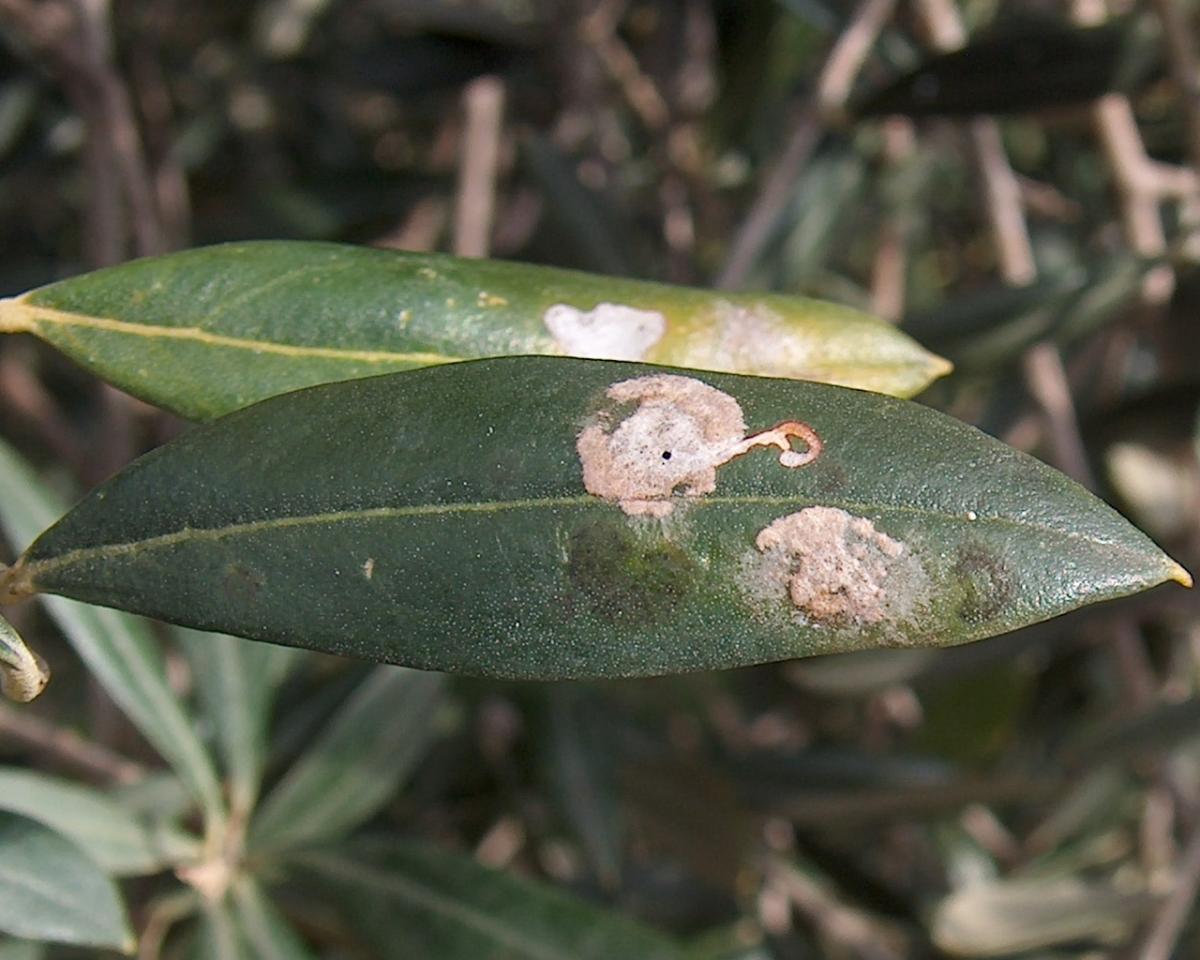
The olive tree is a fruit tree that does not have many enemies. It is a tree that grows at its own pace, that is, neither too fast nor too slow; although it is true that during its first years of life it does so at a somewhat higher speed than once it matures. This is a characteristic that it shares with other trees, and it is nothing more than a survival strategy.
And it is that from when the seed germinates until the plant becomes stronger, time passes, and during those months (or years) there are microorganisms and insects that will take advantage of any opportunity that is presented to them to cause damage. But, specifically, What are the pests of the olive tree? Are you safe once you reach adulthood?
The reality is, no. All fruit trees, as they produce edible fruits (not only for humans, but also for many other animals and / or insects), can end up being victims of those insects that multiply quickly. Some, if they are few in number, the only thing they will do is perhaps damage some leaves or fruits, but as they reproduce very quickly and in large numbers, we will have to take measures to protect them.
So, let's see what are the pests of the olive tree and what we have to do to keep it safe:
Soot mealybug

Image - Wikimedia / Toby Hudson
The cochineal is a pest that affects many crops, among which is the olive tree. The species that causes damage is the saissetia oleae. Unlike other types of mealybugs, this one is dark in color (and not white), measuring 2-6 millimeters in length. You will find it in the green branches and in the leaves, where it feeds. In doing so, it secretes a molasses that attracts the black or soot fungus, which will cause the leaves to turn blackish.
It appears especially in places where the humidity is high, and also after the rains. It is important to carry out preventive treatments if there have already been olive trees with this problem, so that it is protected.
Transmission
Against mealybugs there are several highly recommended remedies:
- Natural or ecological insecticides: diatomaceous earth, potassium soap, neem oil.
- Specific insecticides: that is, chemical anti-mealybugs. For example, Cypermethrin is a substance that eliminates them.
For the bold you can use natural fungicides that contain sulfur.
euzophera

Image - Wikimedia / Donald Hobern
The euzofera, also known as drill, olive tree worm or olive tree worm, is a pest whose scientific name is Euzophera pinguis. It is a small lepidopteran, less than two centimeters long, with wings that have light brown stripes and others that are darker brown. In its larval stage it excavates circular galleries in branches as well as in young trunks.
You have to be very careful when pruning, as this is a very common pest in pruned olive trees. Therefore, it is worth putting healing paste on the wounds, so that the females cannot lay their eggs.
Transmission
In addition to what we just discussed regarding pruning, If symptoms occur, the olive tree can be treated with authorized insecticides, such as these:
- Montana wax 20%
- Cyflufenamid 5.13%
- Clopyralid 60%
- Deltamethrin 10%
Olive moth

Image - Wikimedia / Giancarlo Dessì
In addition to being known as an olive moth, the term prays is also widely used to refer to it. Scientists call her Prays oleae. It is one of the most common and harmful pests of the olive tree, since it goes through three generations that affect different parts of the tree: the first to the leaves, the second to the flowers, and the third to the fruits.
The adult is a grayish lepidopteran (butterfly) measuring about 1,3 centimeters; the caterpillar, on the other hand, reaches 8 millimeters, but its color changes depending on its diet.
Transmission
To control and / or eliminate the olive moth plague you must use authorized phytosanitary products. In Spain, some are:
- Rapeseed oil 44%
- Alkyl Polyglycol 20%
- Azoxystrobin 25%
- Bacillus thuringiensis Kurstaki 32%
Olive fly

Image - Wikimedia / Giancarlo Dessi
La olive fly, whose scientific name is Bactrocera oleae, it is a spring plague. Adult females lay their eggs in the fruits, that is, in the olives, so that once they hatch they are no longer edible for humans. The easiest symptom to identify is the brown spots or even the small holes that appear in the fruits.
It goes through four stages: egg, larva, pupa, and adult. The latter is about 4-5 millimeters long, has transparent wings, and its body is reddish-brown or orange; the mature larva is whitish and elongated, with a length of 6-7 millimeters.
Transmission
If your olive tree has this pest, you have to treat it with authorized insecticides. In Spain, some are:
- Alpha Cypermethrin 10%
- Sulfur 72% or 80%
- Bentazone 87%
- Bifenox 48%
We hope it has been useful to you.